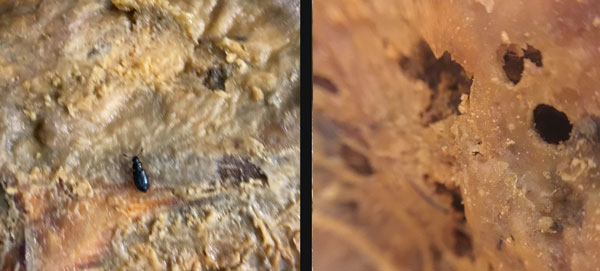Possible problems affecting ham
In this article we compile the possible problems that can arise in an Iberian or Serrano ham.
In a previous article we talked about how to choose a good Iberian ham, but when we have already purchased it we may come across some details that we do not know if they are normal or may affect the quality of the ham.
Here are some of them.
ez-toc
Dark spots on ham
What are the dark spots that appear on the lean ham?
These are called petechiae and are small hemorrhages of the nerve endings. Sometimes, due to the stress of the animal, these microhemorrhages can occur, resulting in these small blackish or very ripe cherry red spots.
In the past, when the pig was stunned with electronarcosis, they were more frequent. This is one of the reasons why other means are now used to lull the animal to sleep before slaughter.
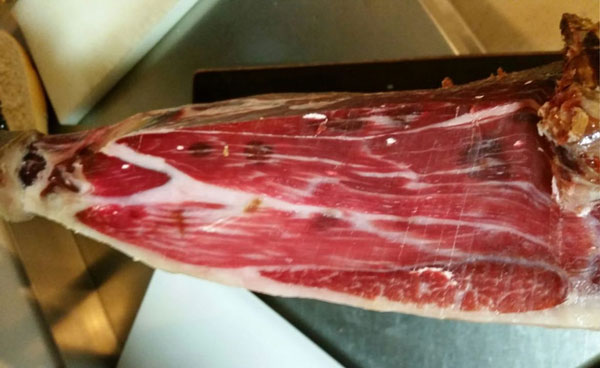
Brown spots on ham bacon
What are those golden spots that appear on the ham fat?
The pigmentations that appear in the fat are unwelcome and annoying to the eye but will never affect the quality of the Iberian ham. It is true that some clients may feel some discomfort or discomfort when it appears on the fat.
Fat, bacon is a tissue formed by adipocytes, cells that accumulate lipids in their cytoplasm.
As living cells, they need blood irrigation, although to a lesser extent than muscle tissue, since the metabolic activity of adipose tissue is minimal.
The stains that may appear on bacon are the result of the oxidation of certain pigments in the blood.
The main cause seems to lie in the stunning and treatment of the animal before slaughter. Often a strong or continuous electric shock can cause the rupture of fibers and blood capillaries causing small internal hemorrhages through almost the entire fat layer. When these small hemorrhages are provoked, the bacteria can act by generating oxidation.
As they are so small, they do not contribute strange flavors to the final product and are not harmful, but it is true that visually they spoil the piece.
Therefore, these pigmentations do not show any anomaly affecting the quality of the product.
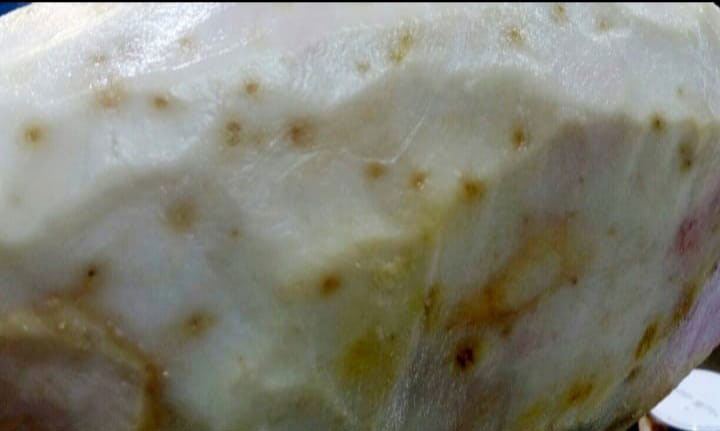
Lice or ham mites.
If on any occasion when you open your ham you notice a kind of sawdust with a putrid odor, we fear that your ham has suffered a mite attack. If what you are seeing are white specks in movement, it means that the mites are alive and attacking your ham.
The ham mite is a mycophagous species, Thyrophagus putrescentiae, which can appear in foods rich in fats and proteins.
Therefore, Iberian ham has all the chances to suffer its attack.
For the appearance of the louse mite there must be very particular conditions of humidity and temperature.
Hence the importance of monitoring the curing conditions of the pieces in the drying sheds.
The appearance of lice in a cellar will mean the destruction of the affected ham and the entire batch to which it belongs.
At home, a kind of sawdust may appear, which is a mixture of dead mites and their feces.
In this case, the mite comes from the dryer and you will have to contact us to remove the piece.
Certain conditions of humidity, temperature and lack of cleanliness can cause the appearance of the live mite in your home.
They would be those little white specks in movement.
The prevention of the appearance of the mite at home or in the cellar involves cleaning and always covering all the cavities of the ham with liquid lard at high temperature which, when it solidifies, creates a plug and prevents the parasite from entering.
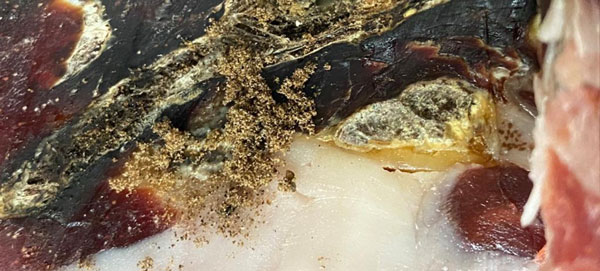
Steatosis
It is usually associated with some genetic heritability and is rare. The lighter shade is due to the large proportion of infiltrated fat. Let’s say that our adipocytes have been loaded to the brim: at the right temperature, there will be no juicier ham. What’s more, it is quite possible that this animal was the glutton of the group and for that in Bellota, it must be one of the best.
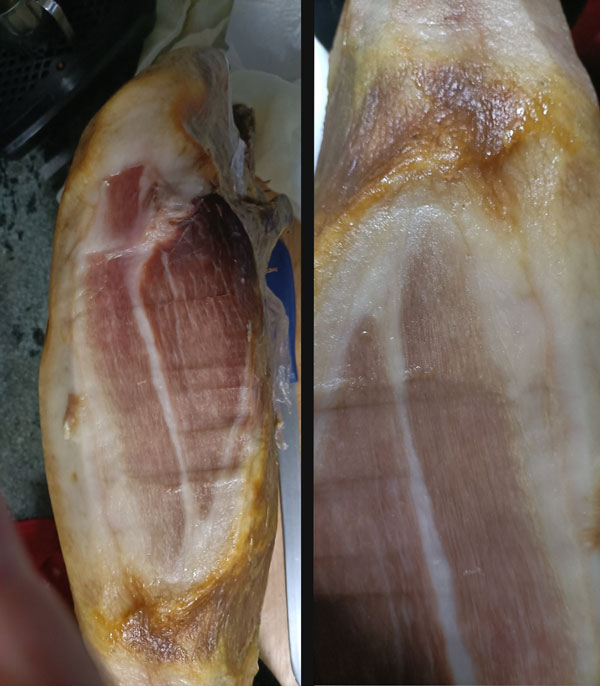
Cove trail
It is not uncommon to find traces of the cove introduced into the ham during the curing process.
In most cases, only a clean trace of the muscle breakage remains. In others, if the incision is not well covered with butter, it would be surrounded by dark around it.
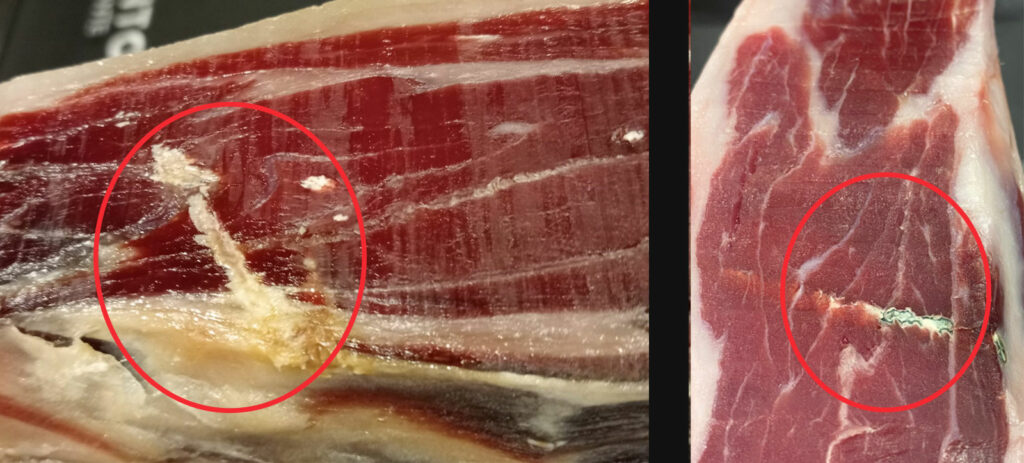
Red Legged Beetle – Necrobia Rufipes
We should know that this insect is not unique to Iberian ham or to our country. The red leg beetle can appear in all types of cured products; cured ham, sausages, dried fish, cheeses and of course in our Iberian hams.
The females lay their eggs in the cracks or holes they find in the ham or any other cured product. The objective is to provide the hatchlings with a pleasant environment and food at birth.
Adult males are flying and very voracious, so if they appear in a ham, sausage or cheese, they must be immediately separated from the rest of the products to prevent them from becoming a pest and contaminating an entire batch.
They are called red-legged beetles because of the maroon color of their legs.
